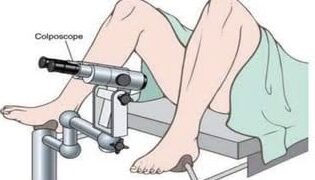1) If you don’t understand something, focus on mastering that topic before moving on to the next topic. It sounds simple, but it is absolutely essential. Lets say a student is learning Algebra, for example. Further, lets say he or she is having a hard time understanding how to add and subtract negative and positive numbers. All of us struggle with this in the beginning as it is a sticky point for most students. Some students in this situation, out of frustration that they “can’t” learn this topic, will move on to the next lesson in the hope that they will be able to understand that one.
This is a recipe for disaster.
Math is very much like learning to read. If you don’t know your letter sounds then you have no hope of being able to sound out words of course there is no way possible that you could read a book. All math courses are taught in a specific sequence because the every topic builds on the previous topic. If you are having a problem with a topic, continue working with that one until you understand it and can work problems successfully. Watch the DVD section over again, attend tutoring, read the book and examples a second time, or even get a totally different book to have it explained a different way…but whatever you do not turn the page and tackle the next topic. If you do, you will get even more frustrated and you in all likelihood will begin to give up hope.
2) Work example problems and check your answers to gain practice with every lesson. The entire premise of the DVD series is to “learn by example” and it is quite simply the easiest way to learn Math. After watching the section on the DVD and reading the section in your textbook, begin working examples from the end of the chapter. Make sure to work the problems that have answers in the back of the book, and check every one. Always begin with the easiest problem in your book, even if you think it will be too “easy” to solve. It is very very important to build your confidence. This is why the DVD lessons begin with easier problems that no one will have any issue understanding. Gradually work harder and harder problems from your book and check your answer for each one. After working a dozen or more problems from the section (two dozen is best), you are ready to move on to the next section. Many students want to plow though a lesson just to make it to the next one. You cannot just read a section in a Math book and become an expert on that section. You must work problems. If you can’t work problems then you are not ready to move on. The good news is that working problems will build your confidence, and confidence is 100% the name of the game in Math.
3) When beginning to work a Math problem, do not “map out a path from problem-to-answer” in your head before writing anything down. I see this almost every day. It is very common when someone looks at a Math problem that they try to “figure it out” in their head before writing anything down. Take Algebra for example. When a beginning student looks at an equation, he or she will be tempted to solve the equation in their head and not write anything down. Students are tempted to do this most often with Word Problems. Since a word problem is written in sentence form, it is common to think that you can “think your way to the answer”. I will tell you that I never, ever, solve any sort of math problem without writing it down. Ever.
What you need to do is begin by first writing down the problem. Then you begin to solve it one step at a time. Write down even the simple things. What you need to ensure is that every single step that you write down is perfectly legal. In other words, if you are solving an equation for example and you subtract “10” from both sides….write that down. Then in the NEXT step actually do that subtraction. Then if you need to divide both sides by “2” write THAT down…then in the NEXT step actually do the division. This gives you a paper trail to check your work and also it allows you to break the problem down in to bite sized chunks. If you can be sure that every single little step is legal, then you will be in good shape. If you try to do too many things at one time, which is common, you will probably try to do something illegal and get into trouble.
4) When you study and do homework, try to find a quiet place to do it. I was the worst offender of this while in school. I used to listen to music all of the time while trying to do homework. I’d also listen to the TV as ‘background noise” while studying. Over time I realized that if I had a quiet place without the background noise, I could focus much better. What I found is that when reading, for example…I would have to read something perhaps 3 or 4 times if I was listening to something else but only once if I had some quiet. People love to listen to music while studying, but I am convinced that it is much more effective if you don’t. Try to find a quiet spot in your home or in the Library to get your schoolwork done and you will get your work done much more quickly because you’ll be able to focus and absorb more.
5) If someone asks you for help, try to explain the topic to them as best you can. This one is going to seem a little odd for this list…but there is one universal truth. Those who can teach others have a true grasp of the material. Many times when studying in groups there will be one member of the group who is behind and doesn’t “get it”. Try to help that person, even if your own work will take longer. Not only will you feel like you are helping someone else succeed, but the process of rephrasing information back to someone else and breaking things down into bite sized chunks will increase your own understanding. It will help you understand at a fundamental level what the stumbling blocks are for the topic, which will help you as you move on in your math studies.
6) Never, ever work math problems in pen. This one is pretty simple. You will make a mistake; it is only a matter of time. When you do, you will want to completely erase your mistake and write over it. You will never, ever want to scratch something out and write next to the scratch-out. This will lead to a paper that is hard to read, and the scratch-outs will actually increase your anxiety about solving these problems. You want clean-neat paper with a clean well thought-out solution.
7) Try to use a mechanical pencil with separate eraser, if you can. Mechanical pencils have cleaner lines and the separate eraser allows you to erase more cleanly. Nothing is worse than making a mistake and trying to erase something then just smearing that all around your page. The cheap erasers will do this and make your life hard. Invest in a good mechanical pencil and a good separate eraser.
8) Keep your solutions neat and line-by-line. Always work problems vertically, with one step on every line. Never work horizontally. It may take more paper, but you will be able to follow your steps much more easily. More importantly, the teacher will be able to follow your work much better which allows him/her to give you partial credit. If there are just 2 steps when there should be 10, you will not be getting any points for your thought process. The steps you write down tell the teacher what you are thinking and how you are attacking the problem.
9) Don’t work problems very late at night. I know all of the college students will be laughing at this, but it is true. I have tried many, many times to do Calculus or Physics late at night, after 12 or 1am, but you are just doing yourself a disservice. I have stared at problems for hours because I just could not sleep until I knew how to solve it…then I finally fell asleep out of extreme fatigue…but when I woke up it just seemed so simple how to proceed with the problem. Also, I have worked problems at night and got the wrong answer, and I knew I must have a silly mistake in the solution. I would usually set out to find it, but many times when you are tired you simply can’t find the silly mistake. The next morning after about 5 minutes I could spot the simple sign error or even a simple multiplication error that caused the problem.
10) If the problem lends itself to it, draw a picture of the problem. This is most applicable for Trigonometry, Calculus, and Physics Students, but also applies to any word problem in basic math or algebra. Please do yourself a favor and draw a picture of what the problem is describing, even if your picture is simple. We are visual beings…the process of drawing the situation causes us to internalize what the problem is really asking for. It helps figure out how to proceed. If you are in Physics, you should draw a picture for every single problem that you work out. If you are in Calculus, definitely draw pictures for all related rate problems. If you are in Calculus 2 or Calculus 3, definitely draw a picture of all of your 3-dimensional problems (3d integrals). If you are in basic math and Jenny gives Bob 2 pencils and Bob gives 1 pencil away, draw that situation. It will really help you figure out how to proceed.
Remember, there is no silver bullet in learning Math. It comes with taking things one step at a time and with practice. The tips above will help you along in your math studies, and give you confidence. And confidence is 100% the name of the game in learning any level of Math.



































